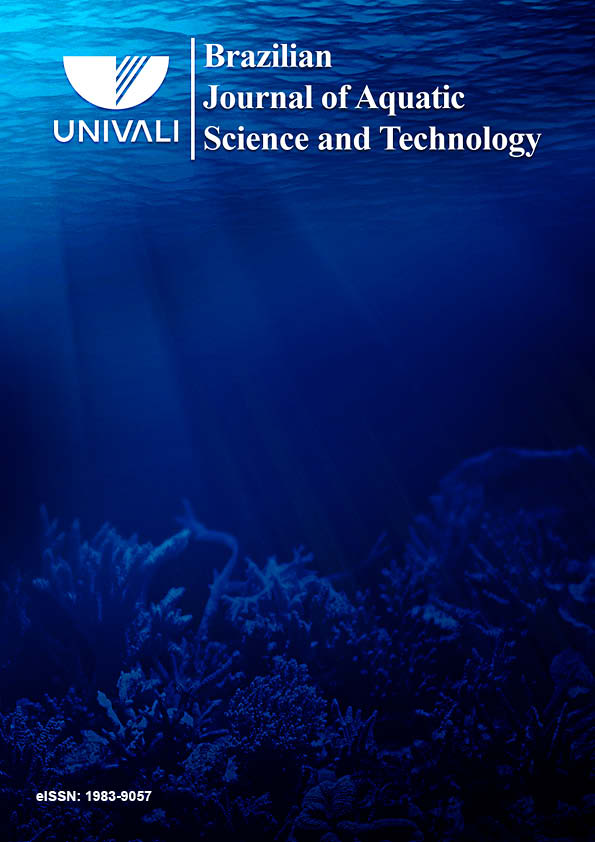Microphytoplankton biomass and trophic state of the Estuarine Region of São Francisco River (northeastern Brazil)
DOI:
https://doi.org/10.14210/bjast.v20n2.5297Resumo
One of the most serious problems that affect estuaries is the excessive enrichment of nutrients, especially nitrogen and phosphorus compounds that result in increased productivity. Studies to evaluate the trophic conditions of the São Francisco River estuary were conducted at four stations in the rainy (July/ 2006 ) and dry (January/2007) season in neap and spring tides, during high tide and low tide. Microphytoplankton was collected using plankton nets with mesh size of 45mm and the samples for analysis of nutrients and Phytoplankton biomass (chlorophyll a) were obtained from the sub-surface layer with wide-mouthed plastic bottles. The waters of this ecosystem showed salinities ranging from an oligohaline to a limnetic regime, alkaline pH and water clarity ranging between 1.00m and 2.60m. The concentrations of dissolved nutrients varied considerably, being highest during the dry season period. The Microphytoplankton was composed of 176 taxa, mainly distributed among the Chlorophyta, Charophyta and Bacillariophyta. Phytoplankton biomass (chlorophyll a) showed no significant differences between seasons, tides and tidal regimes, however the density (Cel.L-1) was significantly higher in the dry season. Values of a TSI showed oligotrophic conditions in the four stations and in the two periods analyzed. In the dry season there was a higher cell density and increased levels of dissolved nutrients with the exception of nitrate that was considered higher in the rainy season. The Microphytoplankton species are characteristic of waters of low to moderate trophic level and the TSI indicated a predominance of oligotrophic conditions in the two seasons in the study area.
Keywords: chlorophyll a, estuary, hydrology, phytoplankton, seasonality
Downloads
Publicado
Edição
Seção
Licença
Autores que publicam nesta revista concordam com os seguintes termos:
- Os Autores mantém os direitos autorais e concedem à revista o direito de primeira publicação, com o trabalho simultaneamente licenciado sob a Creative Commons Attribution License que permitindo o compartilhamento do trabalho com reconhecimento da autoria do trabalho e publicação inicial nesta revista.
- Autores têm autorização para assumir contratos adicionais separadamente, para distribuição não-exclusiva da versão do trabalho publicada nesta revista (ex.: publicar em repositório institucional ou como capítulo de livro), com reconhecimento de autoria e publicação inicial nesta revista.
- Autores têm permissão e são estimulados a publicar e distribuir seu trabalho online (ex.: em repositórios institucionais ou na sua página pessoal) a qualquer ponto antes ou durante o processo editorial, já que isso pode gerar alterações produtivas, bem como aumentar o impacto e a citação do trabalho publicado.

